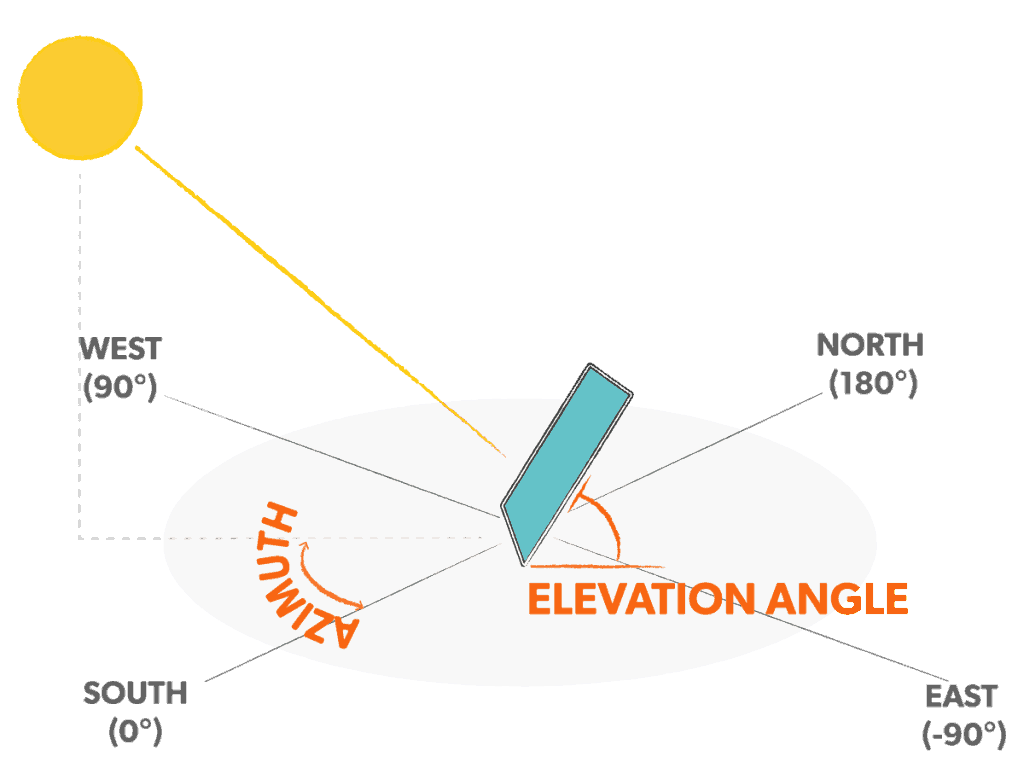The azimuth and tilt confirmation of solar panel is the one of important factors in the design of solar pv system.
Azimuth angle of a solar panel efficiency.
While the angle of your solar panels is important a more important factor in your energy production is going to be the direction your panels face.
Angles to the west are positive.
The following table gives the best dates on which to adjust.
This angle is only measured in the horizontal.
The azimuth is the angle of easy west south and north.
Angles to the east are negative.
A flat roof has a 0 degree tilt and a vertical wall mount has a 90 degree tilt angle.
The general rule of thumb is that panels angled at the latitude angle plus 15 is best to maximise winter sun exposure.
Azimuth angle is their horizontal facing in relation to the equator.
Azimuth is the array s east west orientation in degrees.
For the best results solar panels should be oriented towards the south.
This is because the sun is always in the southern half of the sky in the northern hemisphere.
If your latitude is between 25 and 50 then the best tilt angle for summer is the latitude times 0 93 minus 21 degrees.
Since solar panels are more productive when the sun s rays are perpendicular to their surfaces the certainly best orientation is the one directly true south azimuth angle 180.
The array s tilt is the angle in degrees from horizontal.
In terms of solar pv system the due south of azimuth is 0 it is minus angle from south to east to north it is positive angle from south to west to north.
This angle is 0º at solar noon.
For example if you are seeking to maximise solar generation during winter months be it for an off grid system or higher energy consumption levels you would ideally want to angle your panels at a greater tilt for maximum exposure to the low winter sun.
It is probably close to 90º at sunrise and 90º at sunset depending on the season.
Orientation of the panels.
In most of the solar pv energy calculator tools an azimuth value of zero is facing the equator in both northern and southern hemispheres.
This is the angle between the line that points to the sun and south.
The tilt angle or elevation angle describes the vertical angle of your solar panels.
The summer optimum tilt angle on the other hand will be 34 15 19.
The ideal angle for your solar panels can vary depending on your solar objectives.
On the contrary in the countries of the southern hemisphere such as south africa and australia the best orientation is true north.
The optimum tilt angle is calculated by adding 15 degrees to your latitude during winter and subtracting 15 degrees from your latitude during summer.
Solar azimuth angle γ s.
The compass angle shows 180 for south 90 for east and 270 for west.
If you are going to adjust the tilt of your solar panels twice a year and you want to get the most energy over the whole year then this section is for you.
Solar panels should face directly into the sun to optimize their output.
Tilt azimuth angle.
Positive 90 degrees is facing due west negative 90 degrees is facing due east.

